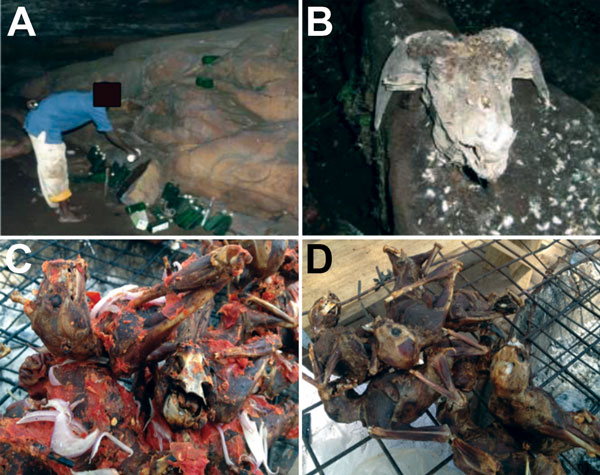Volume 21, Number 8—August 2015
Dispatch
Human–Bat Interactions in Rural West Africa
Figure 2

Figure 2. Typical situations in which direct and indirect bat–human contact occurred in Ghana, 2011–2012. A) Religious activity at the Mprisi cave in Buoyem. The man is pouring libation to the natural gods. The liquid poured before entering the cave is liquor. Note the number of deposited empty bottles, indicating the frequency of cave entries. B) Goat sacrificed for natural gods at the Mframmabuom cave in Kwamang. C, D) Typical examples of roasted bats widely offered and consumed in markets and public places in Ghana. Photographs provided by and published with permission from H. Baldwin.
Page created: July 15, 2015
Page updated: July 15, 2015
Page reviewed: July 15, 2015
The conclusions, findings, and opinions expressed by authors contributing to this journal do not necessarily reflect the official position of the U.S. Department of Health and Human Services, the Public Health Service, the Centers for Disease Control and Prevention, or the authors' affiliated institutions. Use of trade names is for identification only and does not imply endorsement by any of the groups named above.